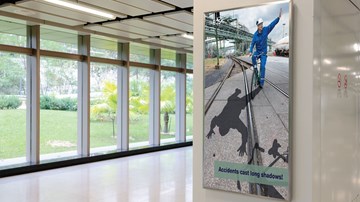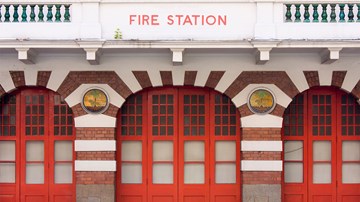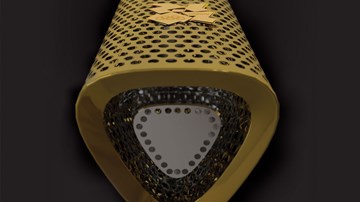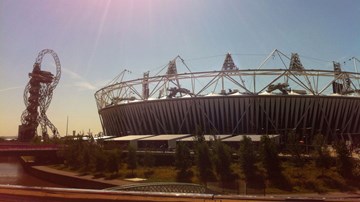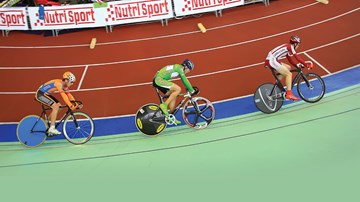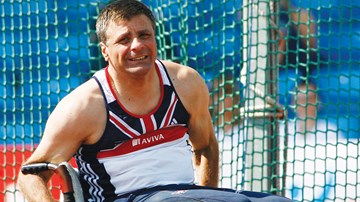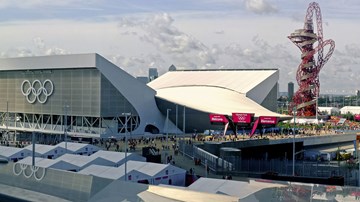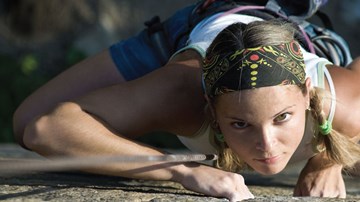Historically, INEOS has grown by acquiring other businesses. But 2008/09 has taken it down a different track. The company is now in a period of organic growth and if it is to continue to develop its business, then it needs to continue to develop its own talent. INEOS offers a difference to many of its competitors that is appreciated by its graduate intake; but how good is INEOS at attracting, keeping and nurturing its graduates?
INEOS is a company that believes in itself. In its values, its ethos, its direction. And what it has to offer future employees.
For someone like Oliver Hayward-Young, a graduate with ambition and desire to prove his worth and be trusted to do a good and meaningful job from day one, that made all the difference when it came to applying for a job after he finished university.
“I didn’t apply to any other chemical companies,” he said. “INEOS was my first and only choice.”
But despite INEOS’ position as one of the world’s largest chemical companies – Oliver said many of his contemporaries had never even heard of the company.
“I was in a unique position because I grew up five minutes from Lyndhurst where INEOS had its head office before it moved to Switzerland, so they were at forefront of my mind,” he said.
“I did some work experience with them before I went to university and then got in touch during my final year.
“But only a handful of my peers had actually heard about the company.”
That lack of awareness among under-graduates is something that INEOS is now working hard to change.
“Considering the size of INEOS, we have never really told the INEOS story as well as we should,” said Jill Dolan, INEOS Group HR Director.
“In some countries, such as America and Germany, we have very established graduate recruitment programmes. INEOS has a lot to offer, but we recognise that there is a lot more we can do globally to tell a coherent story about the company, to help us attract the best.
“We believe that our offer is very different to other chemical companies.”
This October, INEOS plans to attend some of Britain’s and Europe’s top university careers fairs for the first time, to raise the company’s profile, shout about the benefits of working for a very large company with a flat management structure and tempt the very best students to apply. In addition, the already established and successful careers fairs in America will be enhanced.
INEOS, which employs 15,000 people and operates 51 manufacturing plants in 13 countries, knows what it can offer. The problem is that some better known brands on the face of it – are seemingly more attractive places to work. And they may be for some. But for those graduates that want real jobs from day one, that want to shine, learning new skills in real roles, alongside talented senior management, then INEOS is the place.
“That’s why we need to improve our graduate recruitment branding,” said Jill.
“Because once graduates are working for INEOS, many comment on the fact that they hadn’t realised that the company was so big, with such a flat structure. In some companies you can get lost in the bureaucracy – not INEOS.”
“We are straight talking. I suppose you could say we do what we say on the tin. We just need to improve the tin.”
Graduates seeking a fast-paced, dynamic, entrepreneurial working environment won’t be disappointed. INEOS is up there with the best. It just needs to be seen to be up there with the best.
“INEOS gives its graduates a lot of responsibility very early on and that was very important to me,” said Oliver, who graduated from University College London with an economics degree in June 2010.
“For me, the best opportunity to learn and develop comes from taking on responsibility and being pushed.
“But being given responsibilities and accountabilities means that being able to use your initiative and make calculated decisions are very important.”
It is a view echoed by Jill.
“INEOS affords an exciting working future for those who want to be challenged,” she said.
“Overall we want our graduates to thrive in the INEOS environment. And a key part of the INEOS offer is the very real job that a graduate will come into.”
At INEOS, graduates won’t be placed on a ‘graduate scheme’ and moved into different areas every six months to complete yet another project or report.
At INEOS, we expect initiative, drive, passion and an appreciation and understanding of the organisation’s ethos.
“Most graduates are energised by INEOS’ lean management structure with real jobs and support to help them develop at a fast pace,” said Jill.
“It’s a very open and non-hierarchical environment where exposure to senior managers is common, and we expect our graduates to welcome challenge and learning opportunities both as an individual and also as part of a team.
“That inevitably means working hard and smart, but graduates seem to enjoy working alongside other high-calibre individuals.”
Look closer and you’ll find that those individuals all have something in common.
“The kind of graduate who does well at INEOS has a ‘can do’ attitude, is adaptable, energetic, intelligent, technically excellent, results oriented, but also down to earth with good interpersonal skills,” said Jill.
Oliver joined the company in October 2010, working with the polyolefin product managers. He then moved into an analyst position in INEOS O&P’s Feedstocks Trading Team, before recently taking on a new role as the Energy and carbon trader. Here, Oliver is involved in the European gas, power and emission trading markets where he executes trades to manage O&P’s price risk exposure.
“Given that our exposure in Euro terms is in the hundreds of millions, these are very important decisions,” he said.
Oliver is one of only a handful of commercial graduates.
That, in itself, was a big selling point for joining the company.
“For me it represented a unique opportunity to enter a new and exciting role,” he said.
Oliver, who is based at INEOS’ offices in London’s Canary Wharf, was also won over by the way INEOS operates.
“INEOS is not overstaffed,” he said. “Every role is important and if it’s not done properly, it will affect the company’s performance in some way.
“Everyone’s contribution is important and that is very motivating.”
He also saw huge benefits in the company’s flat management structure which he said meant that all employees often saw their senior managers daily.
“Having the opportunity to spend time with senior managers, who have to make key decisions for the business, is so valuable and helps you to sharpen and develop your own skills and broaden your knowledge,” he said.
As for his long-term future, he hopes it will be with INEOS.
“Looking at the variety of roles which INEOS offers, there is a great opportunity to learn and take on new challenges,” he said.
“INEOS’ growth record over the past 14 years is very impressive and an exciting feature for someone just starting their career.
“This organisation is not standing still.”
In July, INEOS organised a meeting of HR Directors from across its businesses to discuss how best to recruit the best.
The response to the improvement plans from the different teams was excellent.
Feedback from graduates, with two or three years in the company under their belts, was also very positive in terms of INEOS delivering what it had promised.
“We were very encouraged to hear the feedback because it confirmed that INEOS graduates actually do experience what we are planning to articulate in the forthcoming recruitment rounds,” said Jill.
INEOS, though, doesn’t recruit for the sake of it.
“We recruit graduates directly into real roles rather than run a specified quota every year,” said Jill. “Our lean structures also mean that we recruit a lot of experienced graduates who have already worked in industry.”
Looking to the future, they plan to continue that trend.
“At the workshop, there was unanimous recognition and support for improving both our graduate recruitment and development processes across the businesses,” said Jill.
“Each INEOS business is different so we do not want to lose that, but we do want to capture the best of local development with a big INEOS underpin.”
In September and October, when INEOS visits universities, it will spell out those very real benefits of working in a flat non-hierarchical structure within one of the largest chemical companies in the world.
And what graduates will also find refreshing is that INEOS expects them to strike a balance between work and play.
“Finding that balance is important to both our graduates and the company,” said Jill. “We’ve found that individual performance overall thrives when he or she gets it right.”
What graduates thought of INEOS:
‘You want to push yourself and apply what you’ve learnt, and INEOS allows that and helps you to evolve’
‘You feel free to discuss things with others no matter how experienced, and that your own ideas are valid’
‘INEOS is a dynamic and exciting place to work. They want you to come and hit the ground running’
‘INEOS is up there with BP and Total’
‘It is a stimulating work environment, with varied problems to solve. No two days are the same’
‘There are all the benefits of a close ‘family feel’, but within a big successful company’
‘There are lots of opportunities to learn, evolve and improve and become a better asset to the company’
‘I was in a real job from day one with responsibility but felt supported by the team and manager’

